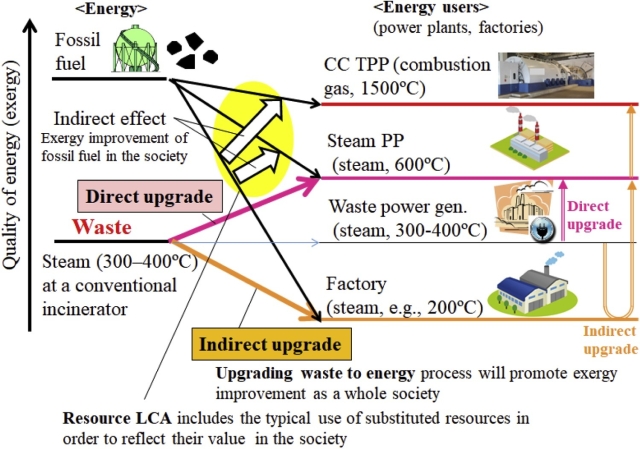論文情報
著者:Fujii M., Dou Y., Sun L., Ohnishi S., Maki S., Dong H., Dong L., Chandran R.
年:2019
掲載誌:Resources, Conservation & Recycling, 149, 586-594
論文へのリンク(英文のみ)
キーワード
Energy recovery, Exergy, Life-cycle assessment, Burnable waste, Carbon dioxide
概要
Efficient energy recovery from burnable solid waste is considered an important component in a low-carbon society. Herein, we discuss the optimization of energy recovery from waste and how to reduce the environmental load of waste. First, we introduce the concept of upgrading waste-to-energy (WtE) processes to improve the exergy efficiency of society as a whole and provide guidance for selecting and combining the most appropriate technology for transforming waste-to-energy. We then propose a methodology called resource life-cycle assessment (LCA) that can be used to properly evaluate the effect of upgrading WtE processes and to optimize waste utilization not only within a given factory or municipality but also within society as a whole. Finally, we present two case studies with which we examine the direct and indirect upgrading of WtE processes and use resource LCA to quantitatively analyze the CO2 reduction achieved by upgrading WtE processes compared with that achieved by conventional WtE processes. The analysis of these case studies shows that upgrading WtE processes would result in approximately 50%–100% greater reduction in fossil fuel input compared with conventional waste power generation, which means that we expect a 50% to 100% greater reduction in CO2 emissions and the concomitant savings in fuel cost. The concept of upgrading WtE processes and resource LCA is useful for selecting a cost-effective option to improve the exergy efficiency both in developed countries and in developing countries, many of which need to contribute to their Nationally Determined Contribution under the Paris Agreement.





